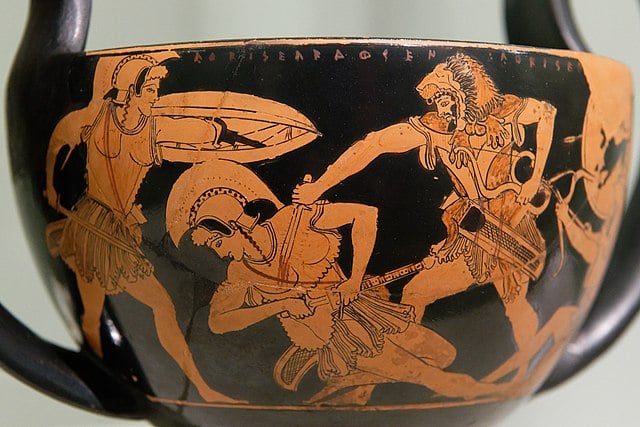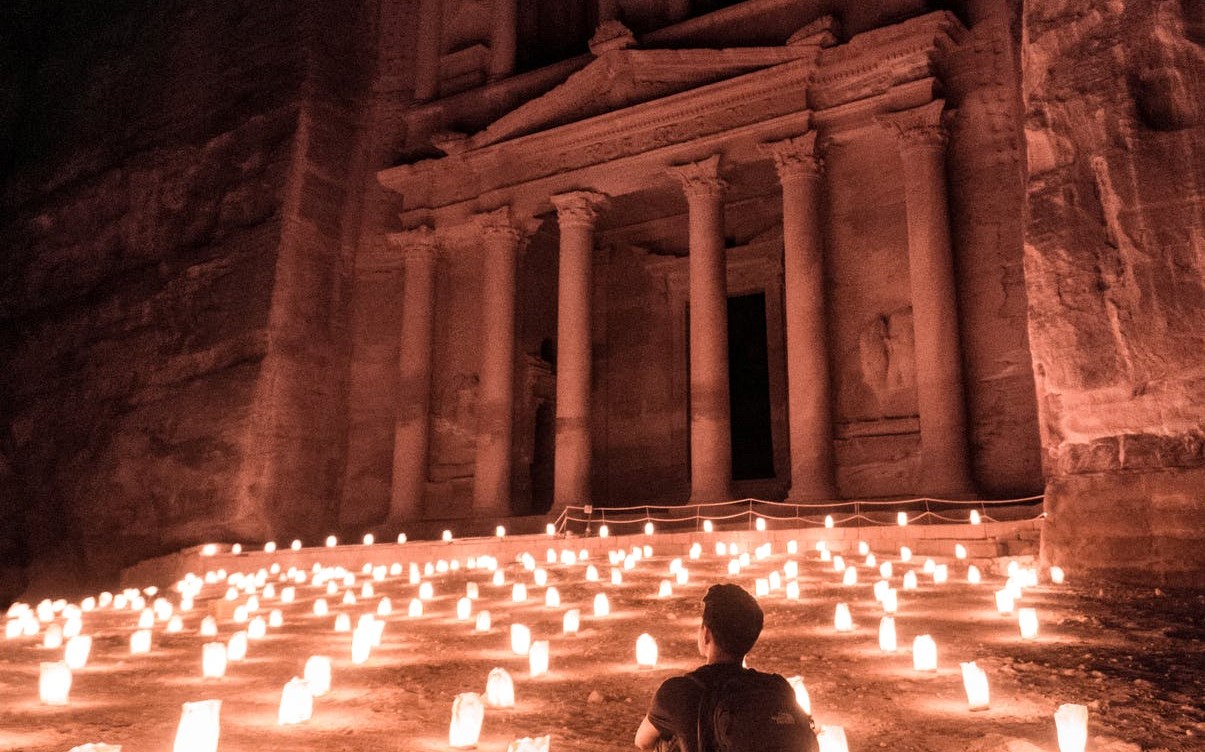Quick—what do Moses and Moana have in common?
At first glance, not much. Moana, as any parent knows, is a bright-eyed teenager who goes on a colorful journey across the sea to save her homeland. Moses is an old man who travels across many miles of desert to fight Pharaoh for the release of his people. Moana fights a giant crab and an army of angry, dart-spitting coconuts. Moses parts the Red Sea to escape a mad king and his cavalry of war chariots.
Despite their differences, both of these characters live out stories that are built on a shared structure—one which has provided the backbone for countless tales throughout history, popping up again and again across vastly different places and cultures. It is the formula that powers everything from campfire ghost stories to Hollywood blockbusters—a piece of common ground where all of humanity’s weird, wonderful legends converge.
We’re talking, of course, about The Hero’s Journey.
This blog post is the first in a series on The Hero’s Journey: where it comes from, how it works, and—most importantly—how you can use it to tell the story of your organization in a way that rocks people to the core.
In later posts, we’ll cover the steps of the Journey in detail. Today, we’re kicking things off with an overview of the Journey as a whole, and what it can do for your brand story.
Campbell (Not the Soup)
While every story is unique, most stories—and especially the ones that stick—rely on hitting a certain set of emotionally resonant beats, in a certain order, to create a strong impact on the listener.
One of the first people to identify these beats was literary scholar and mythologist Joseph Campbell. In his most famous book, The Hero with a Thousand Faces, Campbell argued that myths and folktales from around the world are built around a simple framework he called the monomyth, a.k.a. The Hero’s Journey. As he put it:
- “The standard path of the mythological adventure of the hero is a magnification of the formula represented in the rites of passage: separation—initiation—return: which might be named the nuclear unit of the monomyth.” - Joseph Campbell, The Hero with a Thousand Faces
Say that ten times fast.
To simplify a little: Campbell believed that many of humanity’s most powerful stories were similar in structure to rites of passage—rituals that mark the transition from the status quo to a deeper, fuller stage of life. This accounts for the power that stories have over us—their ability to change the way we see the world.
Like a rite of passage, a good story can be very broadly chunked out into three phases:
- Separating from the safety and predictability of a community,
- Undergoing initiation into new knowledge or skills by facing difficult challenges, and
- Returning to the community to share hard-won wisdom.
To boil that down even further: most of our species’ greatest stories have involved a protagonist—the Hero—leaving home to face physical, emotional, and psychological dangers out in the wider world, before returning to share their insights with others.
The Hero’s Journey has helped everyone from Hollywood writers to business executives frame their stories in a way that grabs listeners’ attention and holds it. Accordingly, the formula has been approached in many different ways, from the complex original outline provided by Campbell in The Hero with a Thousand Faces to quick-and-dirty guides designed to get writers working quickly.
At Free Range, we use a simplified version of the monomyth designed by our founder Jonah Sachs for his 2012 book Winning the Story Wars. This brand-oriented approach breaks down The Hero’s Journey into twelve easy-to-recognize steps that marketers can use to outline their organizations’ stories.
The Steps of The Hero’s Journey
According to the monomyth formula, a Hero passes through a number of definite steps on their way to greater knowledge and wisdom:
- Ordinary World
- The Hero’s typical life and situation. Their hometown—the place where things are familiar, even comfortable. While the Hero may appreciate that comfort, they recognize that something isn’t quite right here. In some important way, the world is out of balance.
- Call to Adventure
- The Hero is given the chance to leave the Ordinary World, in search of something valuable. A stranger may come to town and invite the Hero on a quest; a letter may arrive which changes everything; or the Hero may just feel the need for change in their heart.
- Refusal of the Call
- In many stories, the Hero spends some amount of time avoiding the Call to Adventure. They stall, argue, or flat-out refuse to leave home, which at least feels safer than the world outside. Eventually, though, the Hero chooses—or is forced—to heed the Call.
- Meeting the Mentor
- The Hero encounters an intriguing stranger—often someone older and wiser than them—who offers valuable advice and tools for the journey ahead. The Mentor provides the motivation the Hero needs to take their first steps into the unknown.
- Crossing the Threshold
- In a decisive moment, the Hero enters the “Special World,” sometimes called “The Underworld.” This is where the bulk of the adventure will take place. The Hero quickly realizes that the rules are different here than in the Ordinary World. This is a place of great danger—and great opportunity.
- Tests, Allies, Enemies
- The Hero faces small tests of strength and character on their way towards the story’s big turning point. Over the course of these little adventures, they’ll meet with many of the inhabitants of this strange new world. Some of these will offer help, and become the Hero’s Allies. Others will pose a threat, and reveal themselves as Enemies.
- Approach the Dragon’s Den
- A time of reflection before the big showdown. The Hero approaches the center of the Special World. The calm before the storm.
- The Ordeal
- The crisis, or pivotal moment, of the story. The Hero faces down their biggest challenge yet. Win or lose, this episode is an inflection point for the Hero—after this, nothing can be the same, and the story must be brought to its conclusion.
- Seizing the Treasure
- The Hero obtains the valuable thing they set out to find—or realizes they had it all along. The journey down into the Underworld is over, and it is time to begin the climb back to the Ordinary World.
- The Road Back
- The Hero must go back the way they came, often fighting through the Enemy’s last-ditch efforts to take back the Treasure and prevent the Hero’s return to the Ordinary World.
- Resurrection
- In a final cataclysmic event, the Hero crosses back over the Threshold into the Ordinary World, so transformed they seem to have been born again. Depending on the story, this might even be a literal resurrection! The Hero may have to endure one final battle with the Enemy before making it out to the other side.
- Return with the Boon
- Forever changed by their experiences, the Hero comes back to the community they left behind, wiser and more fully appreciative of both the Ordinary World and the Special World. They use the Treasures obtained on the journey to help the community correct the imbalance that set the story in motion in the first place.
Structuring Your Brand Story
When trying to bring an organization’s story to life, newer marketers sometimes make the mistake of casting their brand as the Hero of the story, nobly riding in to save overwhelmed consumers from dirty dishes, mid-afternoon munchies, etc.
To be fair, this approach has been used by marketers in the past with some success. Particularly during the broadcast era of media, marketers moved a lot of goods by provoking mild anxiety in audience members, who would then buy that mouthwash, hair cream, or other product to calm the feeling of being less-than.
The obvious problem with this approach is that it leaves audiences feeling belittled, rather than empowered. Audiences can be spooked into engaging with a brand...but they sure won’t appreciate the experience.
To fix this problem, the marketer has to make a subtle but meaningful shift. Rather than make their brand the Hero of the story, they can make the audience the Hero, while the brand takes on the role of the Mentor.
As Jonah Sachs points out, this approach is what transforms a brand from a logo and some copy into a powerful force for change in people’s lives. Again and again, big-name brands have demonstrated that it is both possible and profitable to empower audience members—to create content that frames their lives in terms of the Hero’s Journey.
When a brand steps back from the Hero role, and takes on the responsibility of becoming a Mentor, it does give up a portion of the spotlight. In exchange, though, the Mentor-brand becomes more than just the symbol for a product. It becomes a source of inspiration, guidance, and wisdom—a trusted friend on the audience’s path to fulfilment.
Personally, we think that’s a heck of a lot better than shaming people into buying a certain kind of truck. What do you think?
Thanks for reading! Stay tuned for Part 2 of our Hero’s Journey series, where we’ll explore the first few steps of the Journey in detail, share some real-world examples, and offer some thoughts on how to kick off your own brand story.




